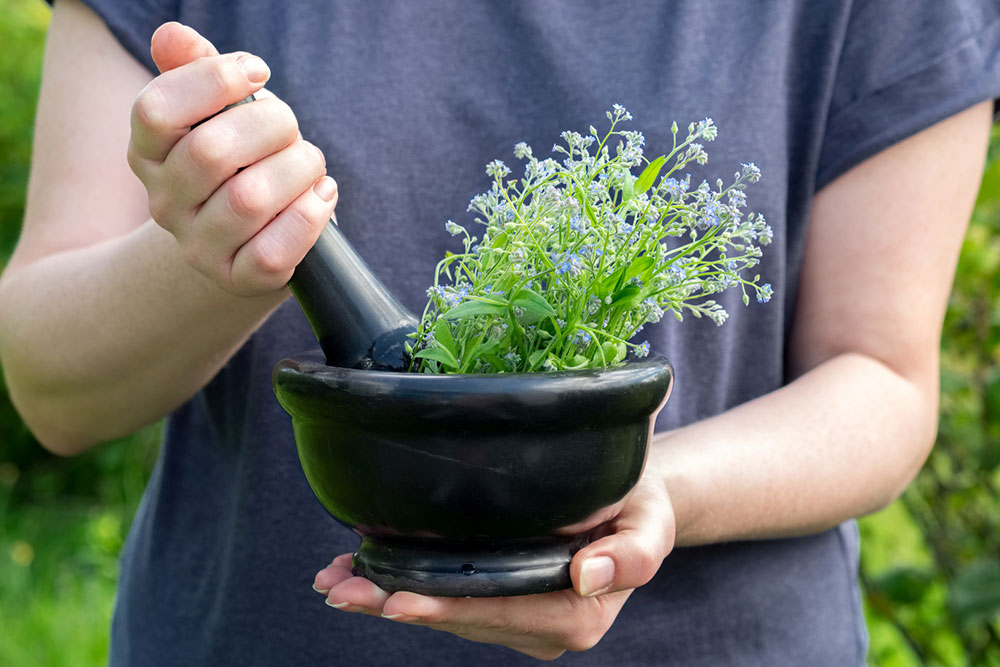Steps to Grow Herbs Indoors in Water
Also known as hydroponic gardening, growing herbs at home is a great way to save on groceries. Besides adding freshness and flavor to meals, home-grown herbs also pack unadulterated nutrients since no chemicals are involved in their growth. For those concerned about the messiness of soil, this is an easy alternative, as all that is needed is water, a few glass jars, and some sunlight. So, one can make a mini herb garden at home.
How to grow herbs indoors in water
Using a few simple steps, one can easily grow several common herbs with water without any prior gardening experience.
- Step 1:

Essentials for growing herbs in water
It helps to pay attention to a few essential things while growing herbs indoors in water. Taking care of these essentials will ensure that the plants thrive and grow well.
- Ensure there is enough light
Since light is important for photosynthesis, one should ensure the herb plant gets the right amount of light at all times of the day. But, different plants have different light requirements. While some can thrive in sunny spots, some need to stay in partly shadowed spots. So, make sure to check beforehand the various light preferences of all the herbs that have to be grown indoors in water. - Pick the right kind of container
A watertight container is necessary for growing indoor herbs. Glass containers are a suitable option, but make sure they are not transparent as light exposure combined with stagnant water can encourage algae growth, damaging the herb. Instead, pick containers that are opaque. Plastic and ceramic ones are some good alternatives. Further, adding a bit of powdered charcoal or a couple of tiny pieces of charcoal into the water can help prevent algae growth. Metal containers should also be avoided as metals undergo corrosion and can react with fertilizers . - Use fertilizer for hydroponic herbs
Most plants, including herbs, take root in water quite easily. Eventually, they will need food to thrive. In most cases, plants that grow in water require low-strength fertilizers. Generally, these are water-soluble fertilizers that must be diluted to at least a quarter of their original strength, depending on the fertilizer types and herb. - Choose the right kind of water
Usually, unchlorinated water is most suitable for herbs. For best results, use tap water that has been at room temperature overnight. Most of the time, the herbs will require water changes once a month, but the frequency of water change may change depending on the type of the container, herb, and amount of light. So, the best thing to do is completely change the water whenever it starts to look a bit murky.
List of herbs that can be grown indoors in water
Basil
One of the most popular herbs to grow in water indoors, basil thrives under complete sunlight and requires warm conditions, making it perfect for kitchen windows that are sunny. When placed in water, the roots start to sprout within a couple of weeks. But make sure to change the water every few days to prevent bacterial growth.
Oregano
This herb easily adapts to hydroponic growth. It requires a lot of light and clean growth for proper development.
Mint
Quite easy to grow in water, mint is particularly suitable for those who want a refreshing flavor in their meals and beverages. The herb requires cooler conditions and can easily thrive even in areas where there is no direct sunlight. Since mint grows rapidly, it is important to prune and harvest it regularly to keep the growth under control.
Thyme
A low-maintenance herb, thyme thrives well in an indoor water setup. It can be grown from seeds as well as cuttings. All it needs is a spot that has complete and direct sunlight.
Parsley
A versatile herb to have around in the kitchen, parsley can be easily grown in water. Its versatility is not only limited to its flavors but also to its adaptability to grow under sunlight and shade.
Other herbs that can be grown indoors in water include rosemary, sage, cilantro, dill, lemongrass, and lemon verbena.

